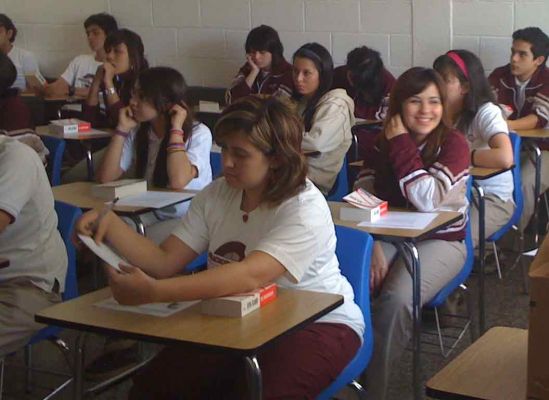
Raising U.S. recruitment prospects for U of T
Published: February 29, 2016
“It’s a bit like following someone on Twitter,” Richard Levin, U of T’s executive director of enrolment services and university registrar, says of Raise.me, a website that puts American high-school students in touch with universities. “You are expressing interest and consenting to be contacted by the school.”
Adding to this interest are the “micro-scholarships” students accumulate by earning good grades, attending classes regularly, involving themselves in clubs and doing well on standardized entrance exams. The incremental awards can add up to $6,000 (or US$5,000) toward the tuition levied by the school to which a student successfully applies.
More than 100 universities participate in Raise.me. Such established institutions as Penn State, Oberlin and Carnegie Mellon are among them. Most are American – logically enough, since only students attending high schools in the United States are eligible to join the program.
But there is no restriction on which schools can become involved. Two weeks ago the University of Toronto threw its hat in the Raise.me ring. Already U of T has more than 500 followers.
“These are 500 people we probably otherwise would have had no way of reaching,” Levin observes. “And the number is growing daily.”
Many of the young people following U of T are from populous places like New York State, Massachusetts, the Chicago area, Florida, Texas and California, but there are nibbles also from Hawaii and Alaska. “It’s pretty broadly distributed,” Levin says. “And we have some very high-achieving students.”
Achievement is the core value of Raise.me, a private company that originated three years ago in San Francisco. Rather than concentrate solely on the last year of high school, when final decisions are made, Raise.me rewards students for productive behaviour starting in Grade 9.
“It allows them to set immediate goals,” Raise.me CEO Preston Silverman said of the system recently in a profile of the company in the New York Times. The micro-scholarships –$100 for an A and $400 for a campus visit are typical sums – also give students an incentive not to drop out.
The system is reciprocal. While students keep their chosen universities up to date by posting grades, the universities communicate with the students about the programs they offer.
Canadian universities are not unknown to American students, and their popularity is sure to rise as the dollar remains in the doldrums.
U of T’s annual tuition of approximately US $30,000 for an international Arts & Science student is similar to the out-of-state rates charged by schools like the University of Illinois and the University of Wisconsin. U of T fees are lower than the rates charged by such academic peer institutions as the University of California (Berkeley) and the University of Michigan.
The favourable currency exchange also helps to make Toronto and its satellite communities relatively affordable. And the university is not hard to sell on its merits.
“U of T offers the chance to study at one of the world’s best universities in the world’s most multicultural city,” Levin points out. “And our grads rank in the top 10 globally for employability,”
Still, getting the word out has proven to be a challenge. Only 607 of the 14,409 international students at U of T in 2014-15 were American.
“Raise.me puts us in the same space as a lot of popular destination schools,” Levin says. “While students are browsing places like Michigan State, suddenly there we are.”
Following a university on Raise.me is no guarantee of admission. But as the cohort of followers continues to grow, U of T can expect the first Raise.me students to arrive in September 2017 – and claim their micro-scholarships.
“We aspire to do much better in the U.S.,” Levin says. “And this is only one strategy we are using.”



